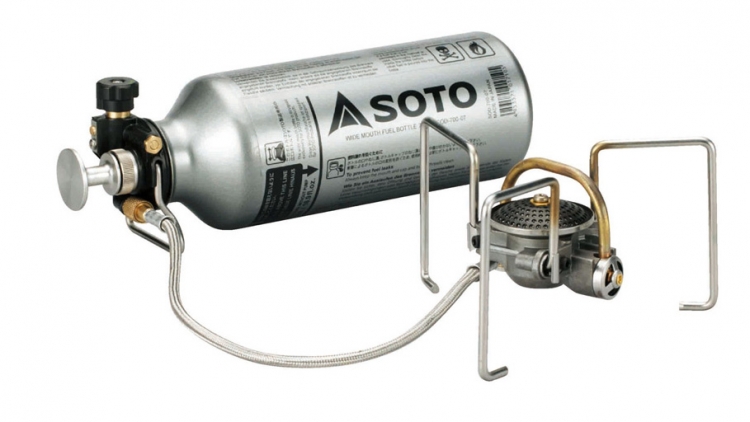Cooking Stoves For Adventure Riding
While there are a number of different cooking stove types, when it comes to adventure riding the two most popular options are canister stoves and liquid fuel stoves. Each stove has pros and cons so one type of cooking stove that suits one rider may not suit you. A lot will depend on how long your adventure rides are, as well as where your adventures take you.
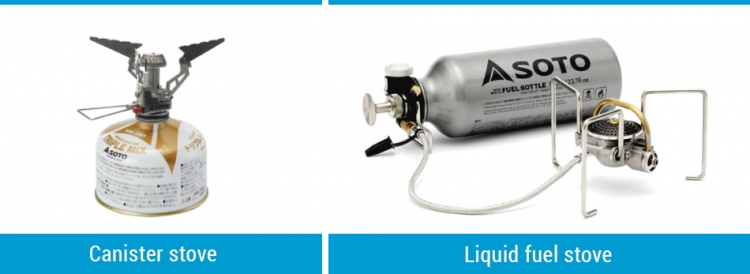
This article focuses on the main features of a cooking stove and compares the canister stoves vs liquid fuel stoves regarding suitability for adventure riding. At the end of this article, there are some recommendations for cooking stoves.
Cooking Stove Purchase Price
Canister cooking stoves are far cheaper than liquid fuel stoves to purchase. A good quality canister stove can cost around 1/4 the price of a good quality liquid fuel stove and bottle.
Winner: Canister cooking stoves
Cooking Stove Start-Up
Canister cooking stoves are super quick and easy to start up. Many have a built in piezo ignition system allowing you to have a pot of water on the boil in just a couple of seconds after you decide you feel like a hot cuppa.
Liquid fuel stoves on the other hand have a start-up process of pumping, priming and preheating. It's normally a good couple of minutes before your pot of water is on the boil.
Winner: Canister cooking stoves
Simmer Control
Generally, most canister stoves have very good flame control offering the ability to dial in the perfect simmering heat. Some liquid fuel stoves have respectable simmering control but there are definitely those that don’t. Some liquid fuel stoves will pulse at low heat levels and sometimes die altogether. Generally, liquid fuel stoves are a bit more temperamental to get simmering nicely.
Winner: Canister cooking stoves
Cooking Stove Weight And Fuel Weight
Gas canister stoves are normally always lighter and smaller than the liquid fuel stoves however that's not looking at the whole picture. We need to take into account the weight and size of the fuel also.
Gas canisters themselves are quite light so for short trips or trips where only a little cooking will be done, gas canister stoves are a good option. For longer trips however, multiple canisters will need to be carried if you can't buy new canisters or correctly dispose of used canisters along the way.
This is where the liquid fuel stoves have a big advantage as it is easier and more compact to carry larger volumes of liquid fuel, plus there isn't the hassle of disposing of used canisters. Liquid fuel stoves also have the benefit of having multiple bottle sizes. A small 300 ml bottle is super compact and perfect for shorter trips.
Short trip winner: Canister cooking stoves and liquid fuel stoves (tie)
Long trip winner: Liquid fuel cooking stoves
Canisters Versus Liquid Fuel Availability
For short trips the availability of canisters and liquid fuel is of little relevance as you will likely have a good stockpile at home. For longer trips however it can prove difficult to find gas canisters in some of the more remote places. This is where the benefit of a liquid fuel stove really kicks in. On the whole, liquid fuel is far more readily available. This benefit is further amplified with the multi-fuel stoves that can run on various liquids including alcohol, methylated spirits, kerosene, diesel and most conveniently; petrol from your motorbike tank.
Winner: Liquid fuel cooking stoves
Temperature
Cold temperatures are the canister stove’s Achilles' heel. While liquid fuel stoves will operate happily below freezing level, cold temperatures create low canister pressure and render a canister stove almost useless.
Most adventure trips are aimed around good weather so this may not be an issue for most adventure riders however it is certainly food for thought if you plan to do trips throughout the colder months or if you plan to ride in locations where lower temperatures will be regularly encountered.
Winner: Liquid fuel cooking stoves
Cooking Stove Economy
The convenience and simplicity of a canister stove comes at a cost. The results of MSR’s recent economy test concluded that one hour of typical cooking on a canister stove has a cost of $5.56 USD. One hour of typical cooking on a liquid fuel stove running white spirits has a cost of $1.41 USD. This means a liquid fuel stove operates at 26% of the running cost of a canister stove.
Winner: Liquid fuel cooking stoves
Comparison Conclusion
The demands from each adventure rider and each adventure trip varies greatly, so the selection of the most suitable cooker will also vary. Below is feedback on four cooking stoves I have personally used extensively while adventure riding New Zealand, and used them in conditions from 30 degrees C to well below 0 degrees C. This isn’t an exhaustive list, there are many other cooking stoves on the market, but the four below are definitely good options.
Basically, as a general rule of thumb, the high quality cookers are easy to start, reliable and durable. The more you can afford to spend, the better your cooker will be. One word of caution, steer clear of the cheap knockoffs or cheap unknown brand cookers. These have pretty dismal failure rates and I have seen some pretty scary fire balls taking out riding buddies eyelashes and eyebrows! While it was entertaining, the stench of burnt human hair doesn’t really compliment a camp meal ;)
Soto Amicus Stove with Igniter
Like many of the high quality canister stoves, the Soto Amicus is a great option. Lightweight, small, durable and operates very well. While I no longer use canister stoves, I used this one when I was doing a lot of overnight weekend rides. It is a great cooker I would recommend to anyone that prefers canister stoves
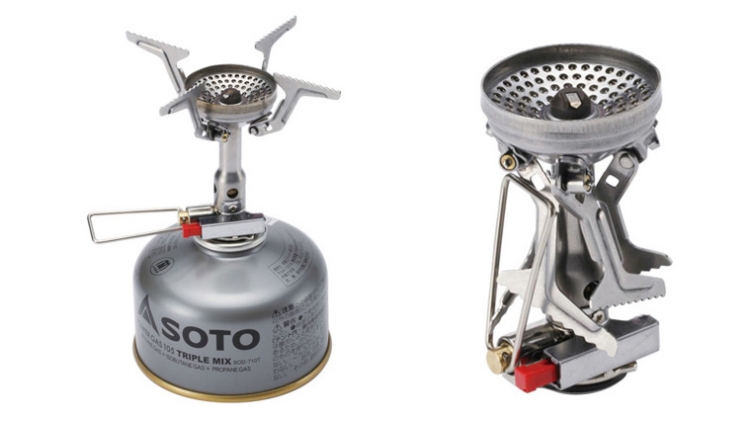
MSR WhisperLite Liquid Fuel Stove
MSR produce a number of liquid stoves however the MRS WhisperLite is one of the oldest and most well-known. One of its strengths is its reliability. It is a great option for where white spirits or kerosene is available as these are the main fuel sources for this stove.
I used my WhisperLite for over 10 years before I switched to a WhisperLite International, which is similar, but runs on petrol. I still have my WhisperLite. In the 10 year period, I gave it one birthday by servicing it with the MSR servicing kit. It operates today as good as the day I purchased it.
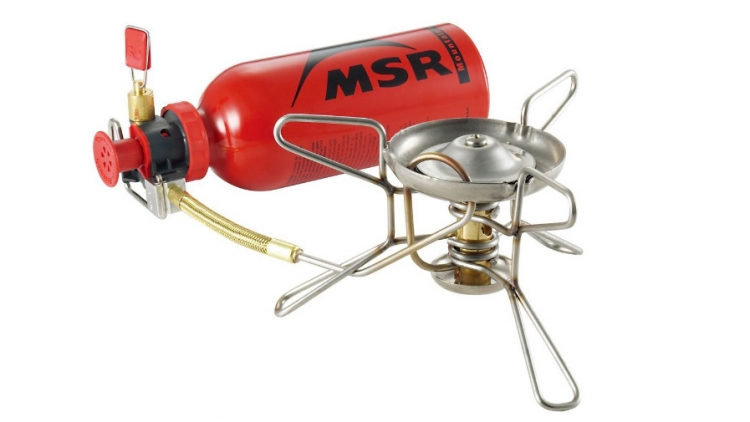
MSR WhisperLite International Liquid Fuel Stove
Another great MSR stove. Modelled on the original WhisperLite, the WhisperLite International offers the ability to run on white spirits, kerosene and petrol.
I love this cooking stove. It is my go-to cooker for all my trips now. The convenience of being able to use the petrol from my motorbike is excellent. Admittedly the preheating process is cumbersome and sooty when running it on petrol, but it is a reliable and powerful cooking stove that's perfect for adventure riding.
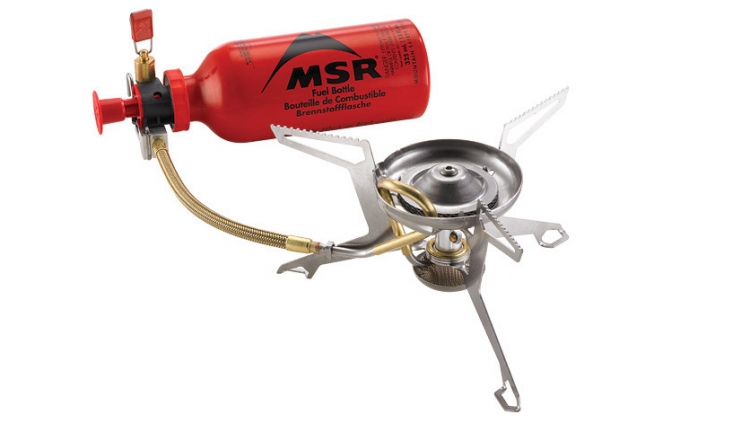
SOTO Muka Liquid Fuel Stove
This is a beautifully engineered Japanese built stove that runs on petrol. It has an exceptionally short and very clean preheating phase; much better than the MSR WhisperLite series stoves. It has good heat output and respectable flame control for simmering. This is nearly the perfect liquid stove however there were two things that didn’t work for me.
Firstly, the pump is undersized. It takes so much pumping to bring the bottle up to pressure, especially when the bottle is nearly empty. The MSR pump is far more efficient, and quicker.
Secondly, this stove only runs on low octane 91 unleaded petrol so if your bike runs on higher octane petrol, this defeats the purpose of having a petrol cooker for the benefit of using your bike’s fuel when you need to top up your cooker bottle.
I tried using high octane fuel in my Soto Muka. It blocked up the jets relatively quickly and it required dismantling and cleaning. That’s not the easiest process either. This is why I use the MSR WhisperLite International, it will run on any petrol you throw in the bottle.
Those two points aside, the Soto Muka is still a brilliant cooker that is very reliable when you run it on the recommended low octane fuel and if you are happy to do a bit of extra pumping.
